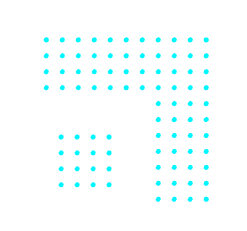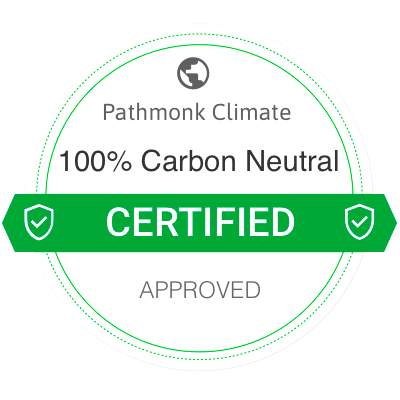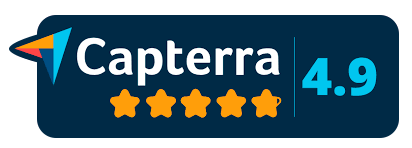Marketing leaders make decisions that directly impact revenue, and yet, too often, the numbers they’re shown are little more than educated guesses dressed up as insights.
At Pathmonk, we’ve seen firsthand how skepticism slows down adoption of even the most effective CRO solutions. And honestly, you’re right to question results that aren’t statistically sound.
That’s why we built Pathmonk’s testing framework on a foundation of rigorous mathematics.
Every uplift you see in our dashboard is backed by established statistical methods: significance testing, confidence intervals, and sample thresholds, translated into results you can act on.
We test. We validate. And only when the data proves it, we scale.
In this article, we’ll break down the math behind Pathmonk and the most relevant concepts our tool uses.
Quick access to:
What conversion rate uplift really means
Before we talk about uplift, let’s get clear on the basics. A conversion rate is the percentage of website visitors who take the action you want them to take. That action could be booking a demo, signing up for a trial, downloading a whitepaper — whatever your primary goal is.
The formula is straightforward:
Conversion rate = (Number of conversions ÷ Total visitors) × 100
So, if 100 people visit your site and 5 of them book a demo, your conversion rate is 5%.
Now, imagine that next month your conversion rate is 6%. At first glance, that looks like a one-point improvement. But what it really represents is a conversion rate uplift:
- Previous conversion rate: 5%
- New conversion rate: 6%
- Uplift: +20% relative improvement (because 6 is 20% higher than 5).
Why we recommend running Pathmonk on a 50/50 traffic split
To measure uplift, we need a fair comparison. That’s why we recommend showing Pathmonk to only 50% of your traffic at the start, or until you’re fully convinced of the value we provide.
By doing this, the other 50% of your traffic continues to see your site without personalization.
This is a classic A/B test:
- A (Control): your standard site.
- B (Test): your site with Pathmonk personalization.
By splitting traffic evenly, we make sure both groups face the same conditions: same campaigns, same demand, same market context. The only difference is Pathmonk. That way, when conversion rates diverge, you know exactly what caused it.
If you expose more traffic to Pathmonk from day one, you lose that baseline. Any uplift could just as easily be seasonality or a campaign spike. With a controlled 50/50 split, you can prove that Pathmonk is responsible for the improvement.
What happens if you compare one month vs another instead of a 50/50 test?
We get this question very often. We understand it: as soon as you install a new tool is easy to fall into the trap of “ok let’s see how July is going vs June”.
But, if you compare conversions from one month to the next, you’re not running a test, you’re looking at two different situations. Seasonality, campaign mix, traffic quality, even something as simple as a holiday weekend can distort the numbers.
For example:
- In June, your ads might bring higher-quality leads.
- In July, the same traffic source could shift and drag down conversions.
If you only compare month over month, you can’t separate what was caused by Pathmonk and what was caused by outside factors.
That’s why we insist on a simultaneous 50/50 split. By testing both groups at the same time, under the same market conditions, the only variable that changes is Pathmonk personalization. That’s how you get a clean measurement of conversion rate uplift, and why our results hold up when you present them to your team or board.
Why Pathmonk requires a 10,000 pageview threshold
To run a valid test, you need enough data. That’s why Pathmonk sets a threshold of 10,000 monthly pageviews before results can be trusted.
Here’s why: when sample sizes are too small, random chance can swing the numbers. You might see a 20% uplift on paper, but if that result is based on just a few hundred visits, it could disappear the moment more traffic comes in. Small tests create false wins, and no serious business leader wants to base growth decisions on luck.
At 10,000 pageviews, the math stabilizes. It’s the point where we can reach statistical significance and be confident that any uplift is real and repeatable.
Think of it like polling: ask 50 people and the results are meaningless. Ask 10,000, and you can project the outcome with confidence. Pathmonk applies the same principle, ensuring that when we tell you conversions are up, it’s not an accident, it’s a proven result.
What is statistical significance?
Statistical significance is a way to check if the results you see in an experiment are real, or if they just happened by random chance.
Imagine you flip a coin 10 times and it lands on heads 7 times. Does that mean the coin is unfair? Maybe, but it could also just be luck.
Now imagine you flip the coin 1,000 times and it lands on heads 700 times. That’s much less likely to be random. That’s where statistical significance comes in: it tells you whether the difference you see is probably real.
In simple terms: Statistical significance = confidence. It’s like saying: “I’m 95% sure this result didn’t just happen randomly.”
It doesn’t guarantee the result is correct, but it lowers the chance you’re being misled by noise.
Without statistical significance, you could make website changes based on randomness. With it, you can be confident that the uplift Pathmonk reports is genuine.
The danger of peeking at results too early
One of the most common mistakes in testing is looking at the numbers too early. Imagine you’ve just launched a 50/50 test with Pathmonk, and after a few days, you see a +30% uplift. Exciting, right? But here’s the problem: that result might not last.
Early in a test, results swing wildly because the sample size is still small. As we’ve said before, a handful of extra conversions in one group can make it look like you’ve hit a breakthrough. But just as quickly, the trend can reverse once more traffic flows in. That’s why experienced marketers know that “peeking” — checking results before statistical thresholds are met — is a trap.
Pathmonk prevents this by requiring tests to run until they reach our 10,000 pageview threshold and hit statistical significance. By enforcing discipline, we make sure you don’t celebrate false wins or roll out changes that collapse under real-world traffic.
In other words: don’t confuse early noise with real signal. Patience pays off. When Pathmonk tells you an uplift is valid, it’s because the math has proven it, not because we happened to peek at the numbers on a good week.
Is the A/B test really running 50/50 equally?
Yes, when you set up Pathmonk, traffic is split evenly and randomly between the control group (your standard site) and the test group (your site with Pathmonk personalization).
Here’s how we ensure fairness:
- True randomization: Every new visitor is randomly assigned to either group. There’s no bias in who sees which version.
- Balanced exposure: Over time, the numbers in both groups converge very closely to 50/50. Small day-to-day fluctuations are normal, but across the full test, traffic distribution stays even.
- Equal conditions: Both groups run simultaneously, under the same campaigns, channels, and seasonality. The only difference is Pathmonk personalization.
This is critical because an uneven split would skew the math. For example, if 70% of visitors went to the test group and only 30% to control, you couldn’t fairly compare outcomes. That’s why Pathmonk’s testing framework enforces the 50/50 principle — to give you clean, unbiased results you can trust.
💡 Good to know: Sometimes customers worry if they see “49/51” instead of “50/50” when checking analytics. That’s just random variation. What matters is that the split stays balanced as sample size grows.
Happy with your 50/50 results? Here’s how to scale Pathmonk
Once your test hits statistical significance and you’re confident in the uplift, it’s time to move from proving value to maximizing impact by expanding traffic allocation.
From the initial 50/50 split, you can gradually move toward 95% of your traffic seeing personalization. This ensures that almost all of your potential customers benefit from the uplift you’ve validated.
We always keep a 5% control group running in the background. This is your ongoing benchmark, it makes sure the uplift continues to hold true over time, even as campaigns, seasonality, or traffic sources change.
We also want to be transparent: if your traffic isn’t very high, that 5% control group may not be large enough to generate statistically valid comparisons. In those cases, we recommend either running the 50/50 split longer before scaling or being very aware that the control group conversion rate might be skewed.
This way, you get the best of both worlds: maximum impact from Pathmonk personalization plus continuous validation that your results are real.
“I was seeing a good uplift when running 50/50, but not now”
Sometimes customers notice that once they’ve scaled Pathmonk to 95% of their traffic, the uplift no longer looks as strong as it did during the initial 50/50 test. Here’s why:
When you scale, the control group shrinks to just 5%. If your traffic volume isn’t very high, that group may be too small to produce statistically valid comparisons. A few random conversions (or lack of them) can swing the numbers and make the uplift look weaker than it really is.
Our recommendation:
- Understand the limitation → accept that the 5% control group can be skewed if overall traffic is low.
- Compare against your historical baseline → look at conversion rates from before Pathmonk was implemented to get a cleaner sense of long-term improvement.
- Go back to a 50/50 split → if you want another rock-solid measurement, rerun Pathmonk at 50/50 for a set period. This restores a large enough control group to validate uplift with confidence.
In other words, the uplift is still there, but the math requires either more data or a bigger control group to make it visible again.





